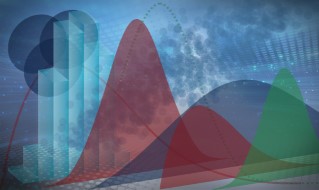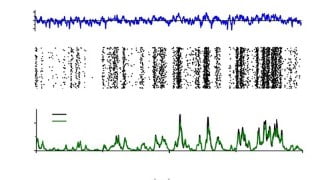Statistics, Confidence Intervals and Hypothesis Tests
Learn basic statistical concepts, probability distributions, and estimation methods in this program. Prepare for high-demand careers in data analysis and optimization. Starting salaries range from $80,000-$150,000.
What you will learn
- Review a library of discrete and continuous probability distributions.
- Meet the normal distribution and the Central Limit Theorem, and discover how they are applied in practice.
- Recognize elementary methods of descriptive statistics.
- Study methods that can be used to estimate the unknown parameters of a distribution.
- Learn what confidence intervals are, how they are used, and how to formulate and interpret confidence intervals for a variety of probability distributions and their parameters.
- Learn what hypothesis tests are, how they are used, and the types of errors that can occur with hypothesis testing.
- Formulate and interpret hypothesis tests for a variety of probability distributions and their parameters.
- These are among the highest-demand professions in the country, and often pay starting salaries from $80,000-$150,000 (depending on job type, location, prior experience, etc.).
Program Overview
Statistics is everywhere! This program will prepare learners for subsequent advanced courses and eventually careers in consultancy, research, and industry – any professions involving data analysis and optimization of real-world systems. The course is brought to you by faculty from Georgia Tech’s top-ranked School of Industrial and Systems Engineering.
This first half of this program (Course 1) provides an introduction to basic statistical concepts. We begin by walking through a library of probability distributions, where we motivate their uses and go over their fundamental properties. These distributions include such important folks as the Bernoulli, binomial, geometric, Poisson, uniform, exponential, and normal distributions, just to name a few. Particular attention is paid to the normal distribution, because it leads to the Central Limit Theorem (the most-important mathematical result in the universe, actually), which enables us to make probability calculations for arbitrary averages and sums of random variables.
We then discuss elementary descriptive statistics and estimation methods, including unbiased estimation, maximum likelihood estimation, and the method of moments – you gotta love your MoM! Finally, we describe the t, χ2, and F sampling distributions, which will prove to be useful in upcoming statistical applications.
The second half of the program (Course 2) covers two important methodologies in statistics – confidence intervals and hypothesis testing. Confidence intervals are encountered in everyday life, and allow us to make probabilistic statements such as: “Based on the sample of observations we conducted, we are 95% sure that the unknown mean lies between A and B,” and “We are 95% sure that Candidate Smith’s popularity is 52% +/- 3%.” We begin the course by discussing what a confidence interval is and how it is used. We then formulate and interpret confidence intervals for a variety of probability distributions and their parameters.
Hypothesis testing allows us to pose hypotheses and test their validity in a statistically rigorous way. For instance, “Does a new drug result in a higher cure rate than the old drug” or “Is the mean tensile strength of item A greater than that of item B?” The second half the course begins by motivating hypothesis tests and how they are used. We then discuss with the types of errors that can occur with hypothesis testing, and how to design tests to mitigate those errors. Finally, we formulate and interpret hypothesis tests for a variety of probability distributions and their parameters.
Courses in this program
Probability and Statistics III: A Gentle Introduction to Statistics
This course provides an introduction to basic statistical concepts. We begin by walking through a library of probability distributions – including the normal distribution, which in turn leads to the Central Limit Theorem. We then discuss elementary descriptive statistics and estimation methods.
Probability and Statistics IV: Confidence Intervals and Hypothesis Tests
This course covers two important methodologies in statistics – confidence intervals and hypothesis testing. Confidence intervals allow us to make probabilistic statements such as: “We are 95% sure that Candidate Smith’s popularity is 52% +/- 3%.” Hypothesis testing allows us to pose hypotheses and test their validity in a statistically rigorous way. For instance, “Does a new drug result in a higher cure rate than the old drug?”
Job Outlook
User Reviews
Be the first to review “Statistics, Confidence Intervals and Hypothesis Tests”
You must be logged in to post a review.








There are no reviews yet.